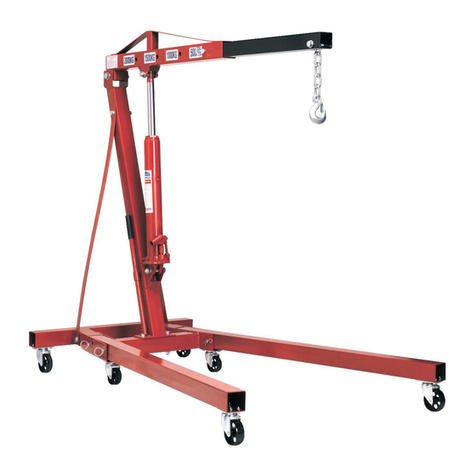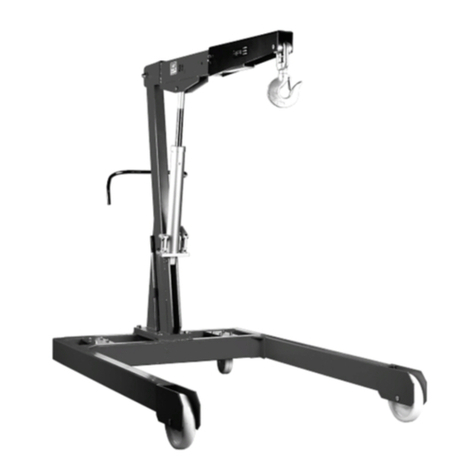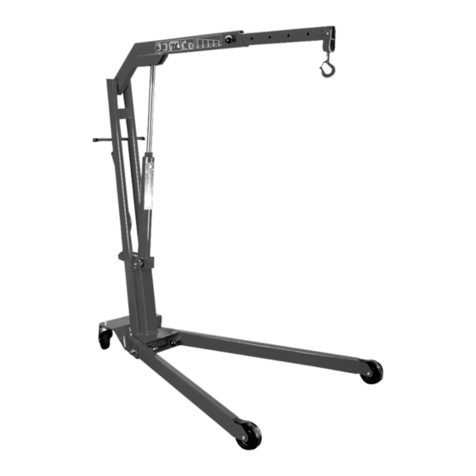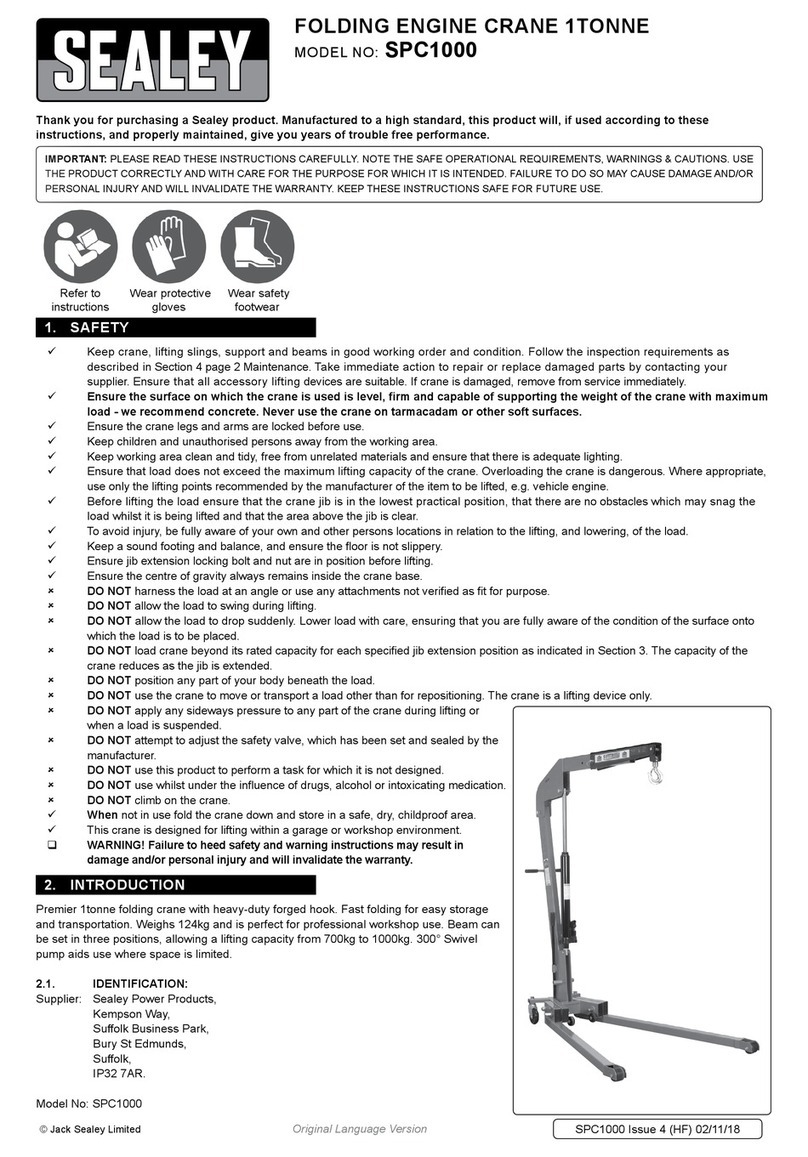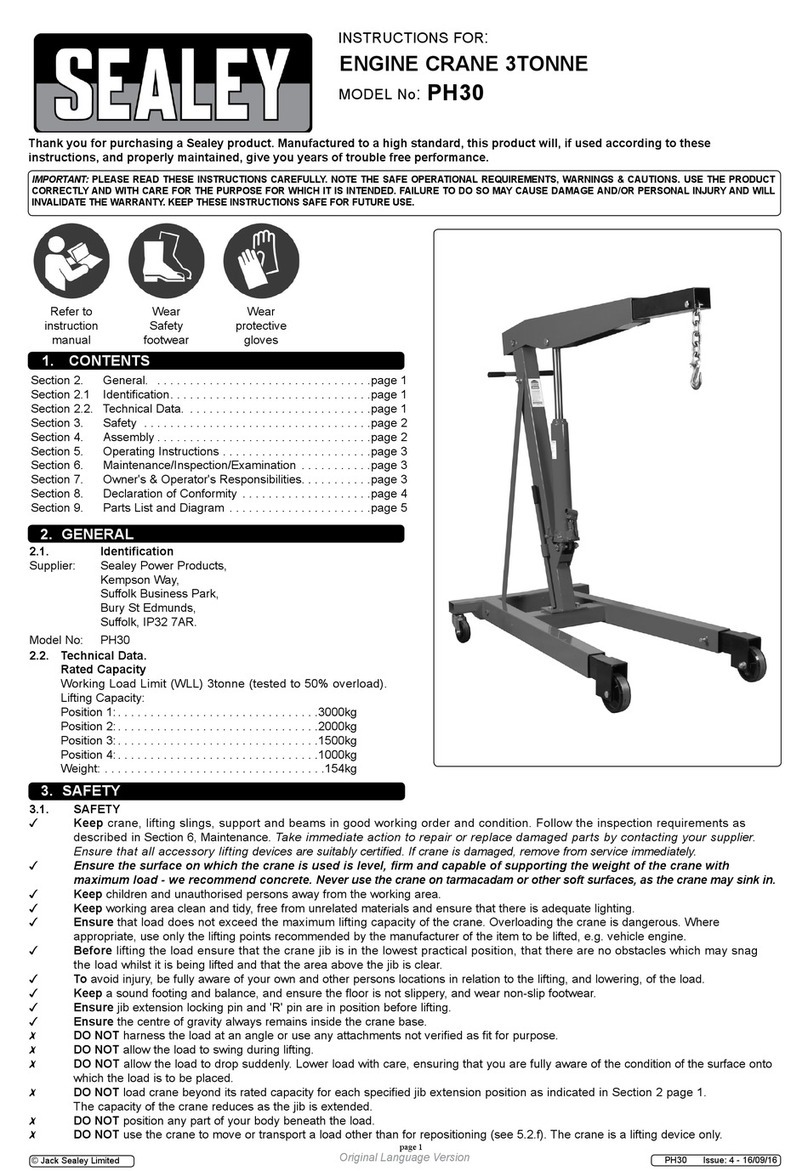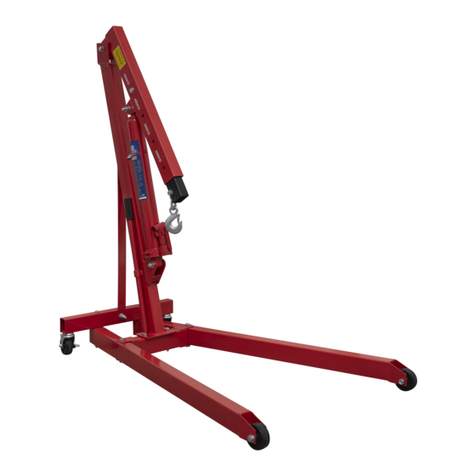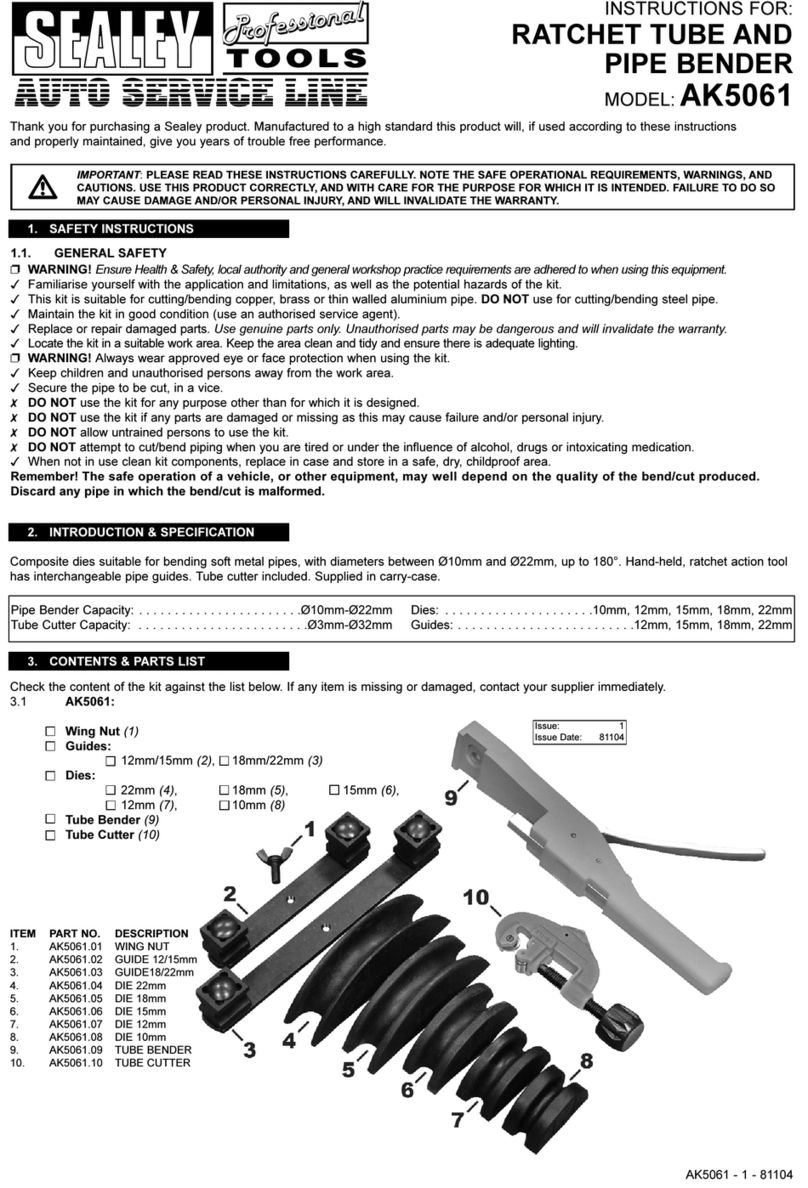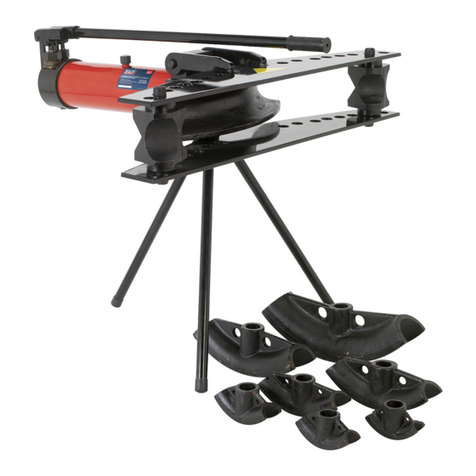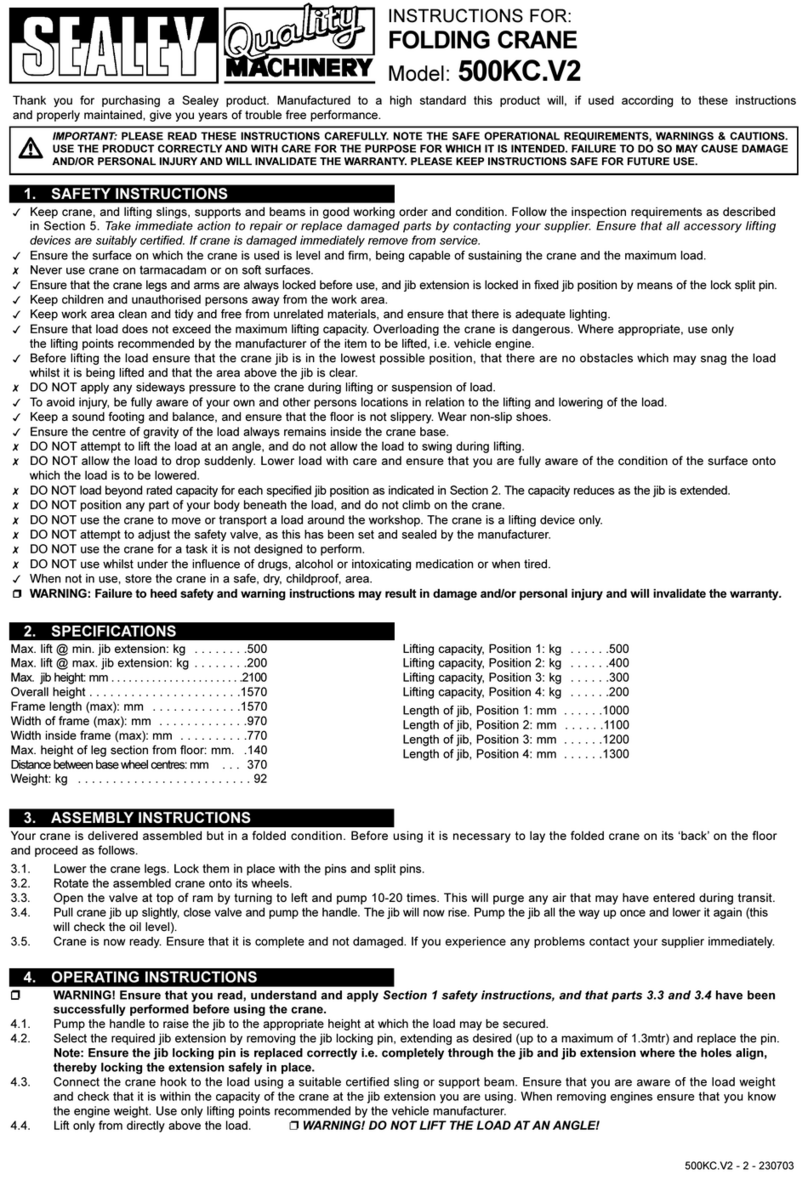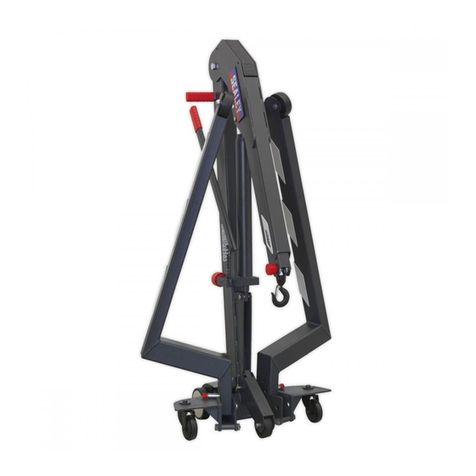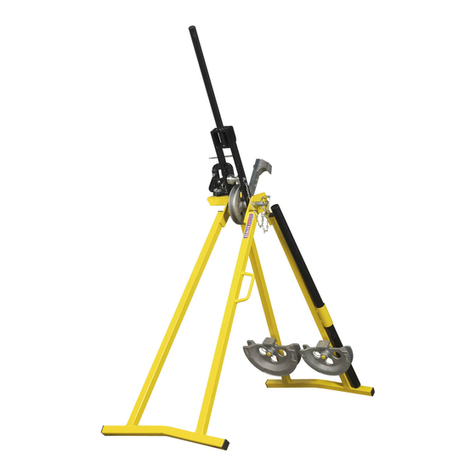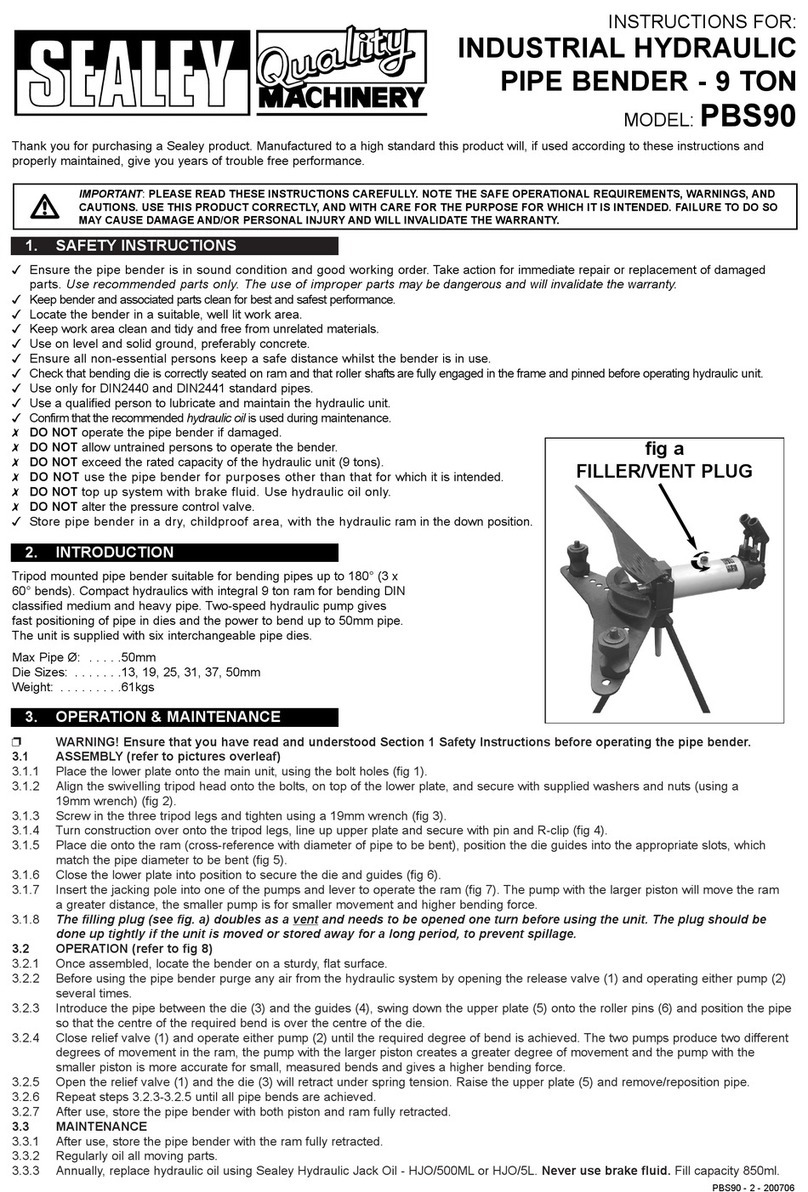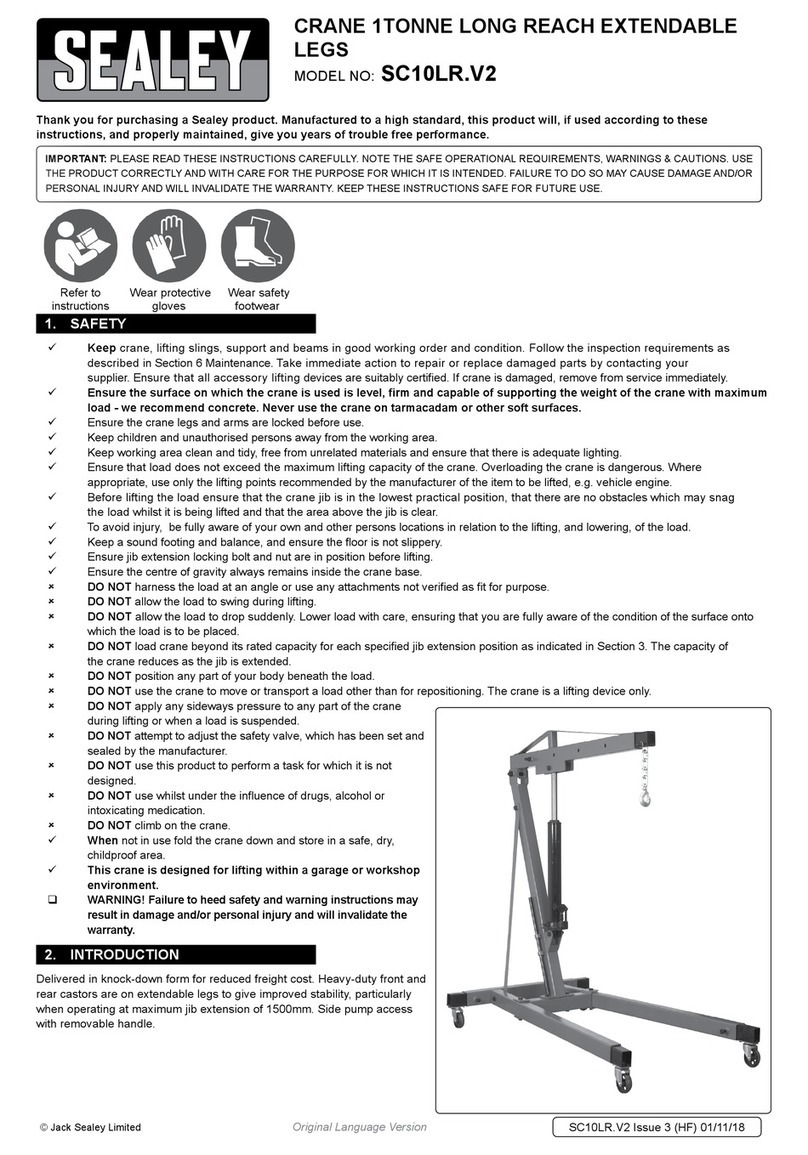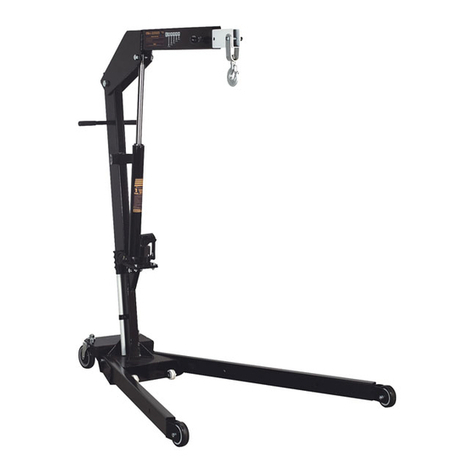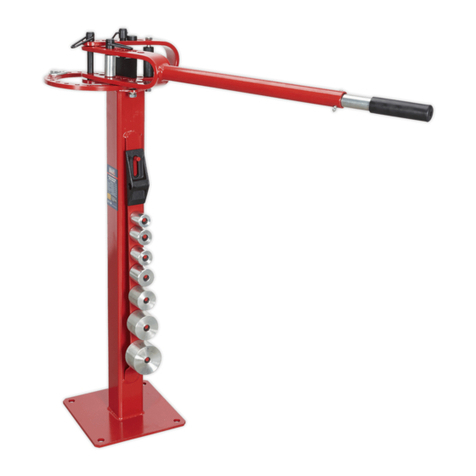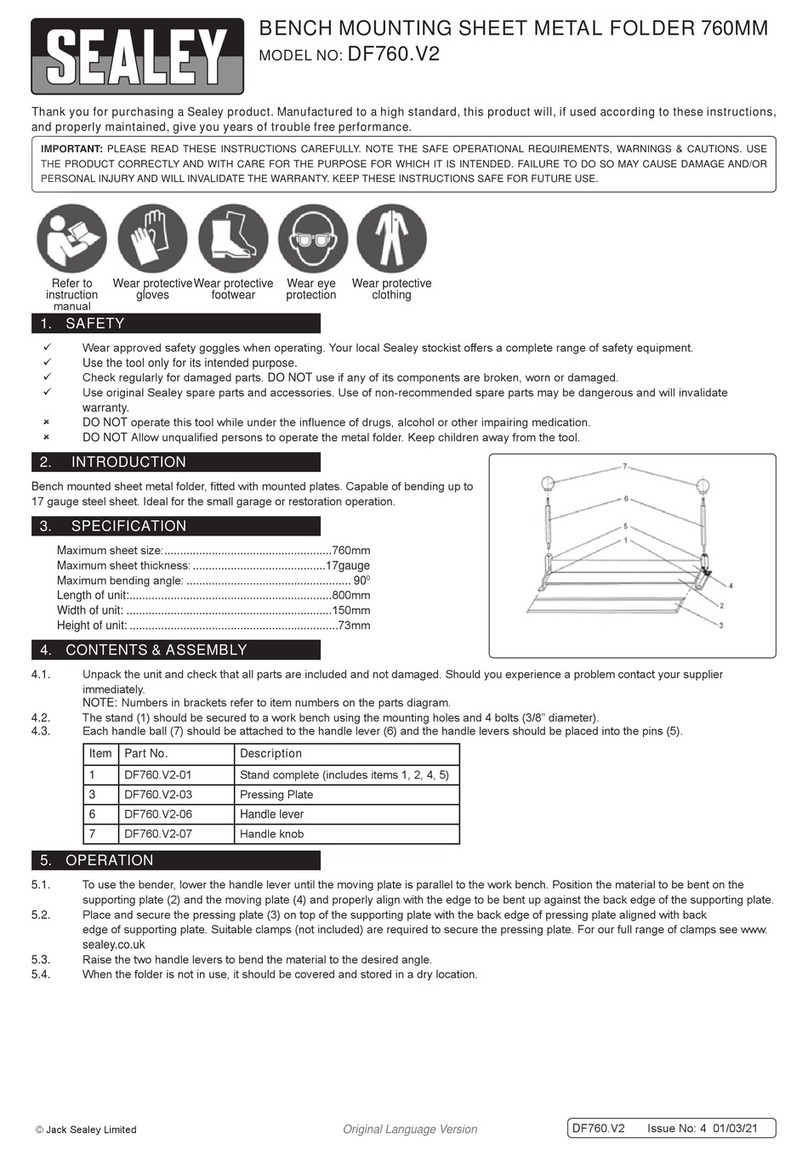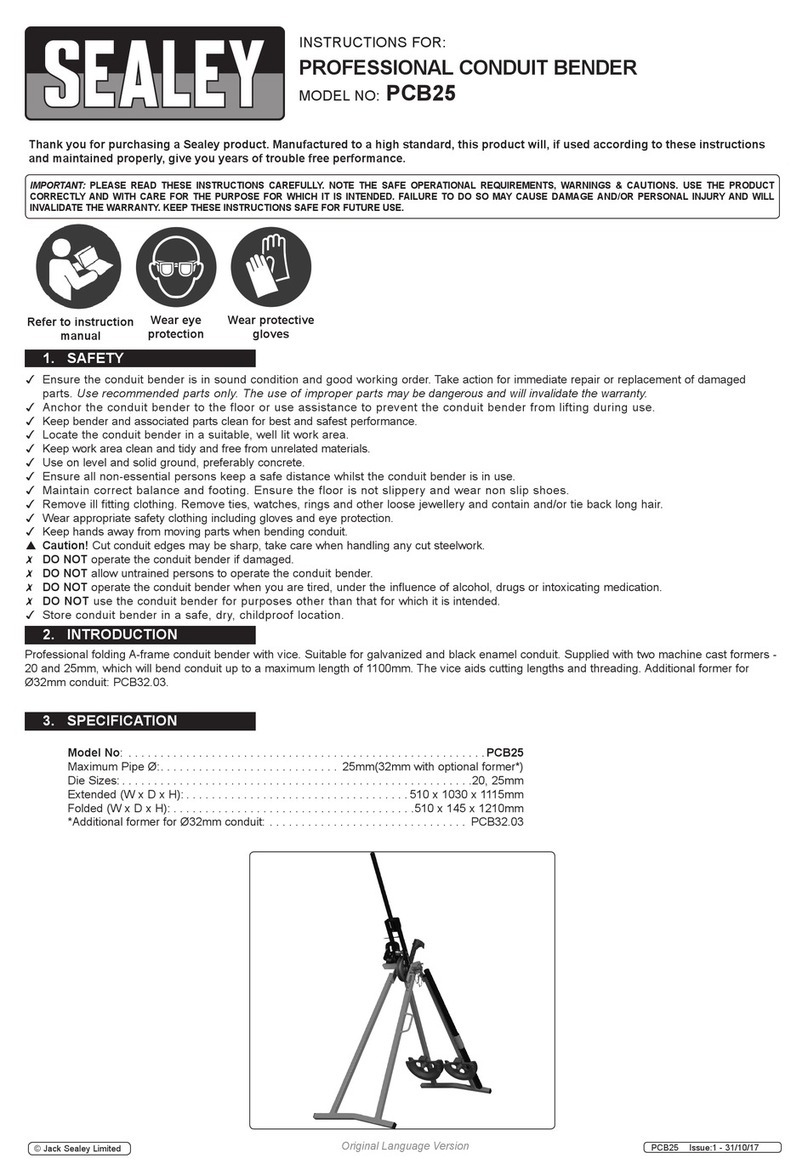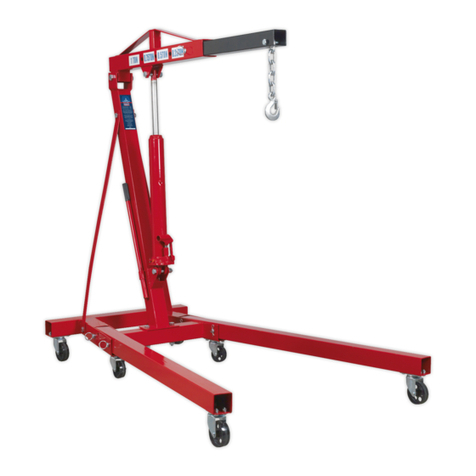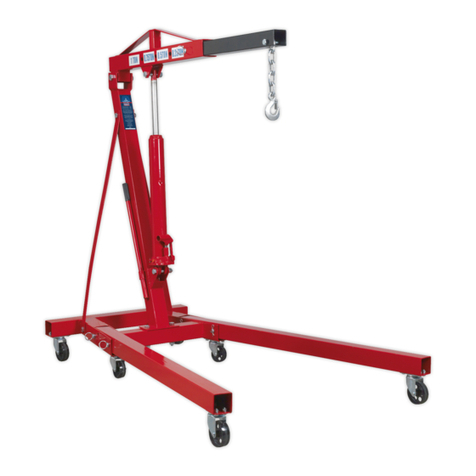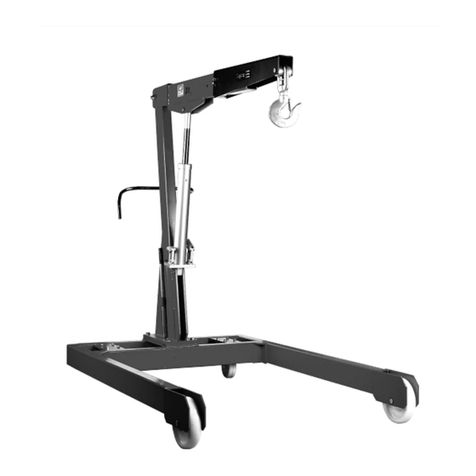
FOLDING ENGINE CRANE 2 TONNE
MODEL NO: SPC2000
Thank you for purchasing a Sealey product. Manufactured to a high standard, this product will, if used according to these
instructions, and properly maintained, give you years of trouble free performance.
IMPORTANT: PLEASE READ THESE INSTRUCTIONS CAREFULLY. NOTE THE SAFE OPERATIONAL REQUIREMENTS, WARNINGS & CAUTIONS. USE
THE PRODUCT CORRECTLY AND WITH CARE FOR THE PURPOSE FOR WHICH IT IS INTENDED. FAILURE TO DO SO MAY CAUSE DAMAGE AND/OR
PERSONAL INJURY AND WILL INVALIDATE THE WARRANTY. KEEP THESE INSTRUCTIONS SAFE FOR FUTURE USE.
1. SAFETY
9Keep crane, lifting slings, support and beams in good working order and condition. Follow the inspection requirements as
described in Section Maintenance. Take immediate action to repair or replace damaged parts by contacting your supplier.
Ensure that all accessory lifting devices are suitable. If crane is damaged, remove from service immediately.
9Ensure the surface on which the crane is used is level, firm and capable of supporting the weight of the crane with maximum
load - we recommend concrete. Never use the crane on tarmacadam or other soft surfaces.
9Ensure the crane legs and arms are locked before use.
9Keep children and unauthorised persons away from the working area.
9Keep working area clean and tidy, free from unrelated materials and ensure that there is adequate lighting.
9Ensure that load does not exceed the maximum lifting capacity of the crane. Overloading the crane is dangerous. Where appropriate,
use only the lifting points recommended by the manufacturer of the item to be lifted, e.g. vehicle engine.
9Before lifting the load ensure that the crane jib is in the lowest practical position, that there are no obstacles which may snag the
load whilst it is being lifted and that the area above the jib is clear.
9To avoid injury, be fully aware of your own and other persons locations in relation to the lifting, and lowering, of the load.
9Keep a sound footing and balance and ensure the floor is not slippery.
9Ensure jib extension locking bolt and nut are in position before lifting.
9 Ensure the centre of gravity always remains inside the crane base.
8DO NOT harness the load at an angle or use any attachments not verified as fit for purpose.
8DO NOT allow the load to swing during lifting.
8DO NOT allow the load to drop suddenly. Lower load with care, ensuring that you are fully aware of the condition of the surface onto
which the load is to be placed.
8DO NOT load crane beyond its rated capacity for each specified jib extension position as indicated in Specification.
The capacity of the crane reduces as the jib is extended.
8DO NOT position any part of your body beneath the load.
8DO NOT use the crane to move or transport a load other than for repositioning (see 5.2.6.). The crane is a lifting device only.
8DO NOT apply any sideways pressure to any part of the crane during lifting or when a load is suspended.
8DO NOT attempt to adjust the safety valve, which has been set and sealed by the manufacturer.
8DO NOT use this product to perform a task for which it is not designed.
8DO NOT use whilst under the influence of drugs, alcohol or intoxicating medication.
8DO NOT climb on the crane.
9 When not in use fold the crane down and store in a safe, dry, childproof area.
9 This crane is designed for lifting within a garage or workshop environment.
WARNING! Failure to heed safety and warning instructions may result in damage and/or personal injury and will invalidate the
warranty.
2. INTRODUCTION
2 tonne folding crane with heavy-duty forged hook. Fast folding for easy storage and transportation. Weighs 172kg and is perfect for
professional workshop use. Beam can be set in three positions, allowing a lifting capacity from 1500kg to 2000kg. 300° Swivel pump aids use
where space is limited.
3. SPECIFICATION
TECHNICAL DATA
Rated Capacity
Safe Working Load (SWL) 1t
Model No: .................................................................. SPC2000
Lifting Cap. in Position 1:...............................................2000kg
Lifting Cap. in Position 2:...............................................1700kg
Lifting Cap. in Position 3:...............................................1500kg
Lifting Cap. in Position 4:......................................................n/a
Lifting Cap. in Position 5:......................................................n/a
Nett Weight:.....................................................................172kg
SPC2000 | Issue 5 (H,F,3) 21/07/20
Original Language Version
© Jack Sealey Limited
Refer to
instructions
Wear protective
gloves
Wear safety
footwear
Max. Lift Height at Jib Position 1: ................................2520mm
Max. Lift Height at Jib Position 2: ................................2600mm
Max. Lift Height at Jib Position 3: ................................2730mm
Max. Lift Height at Jib Position 4: .........................................n/a
Max. Lift Height at Jib Position 5: .........................................n/a
